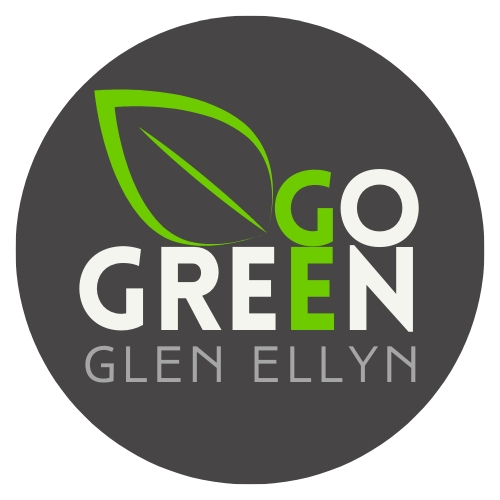The Key(stone) to your Garden
With this amazing spring weather, our thoughts turn to gardening! You can make your backyard an ecological powerhouse with just a few strategic plant choices. Right now is the perfect time to plan your garden and give it a native makeover. Let's dive into the world of native and keystone plants, and discover how they can transform your yard into a buzzing, blooming haven for pollinators. There are a lot of native plant sales on tap in the next few weeks– we will include some here so you can move from plan to action!
LEARN
We know that we can seem to be very attached to GE's wide, lush, green lawns. How about making them a little less wide this year by adding some native and keystone plants to the mix? We are not asking you to tear out your lawns or kick your hostas to the curb, but you can help the local environment by some strategic native choices. We have previously covered the importance of native species, but as we head back into garden season we have included a quick reminder list below as to why they are so darn beneficial.
The list of reasons that native plants are beneficial.
You may know less about keystone plants, so let’s focus on those – the real MVPs of our local ecosystem! The term keystone plants was coined and popularized by Go Green GE favorite Doug Tallamy, an entomologist and best selling author of such books as Homegrown National Park. He has a new one available at The Bookstore called How Can I Help? Saving Nature with Your Yard.
Keystones are native plant species that are critical to the local ecosystem as they support the local food web. Think of them as super-natives, as they shoulder the work of hosting caterpillars and pollinators and feeding baby birds and other animals that are critical to our local ecosystem.
Tallamy feels that every landscape (that means your yard!) should do four things: 1) manage the watershed in which it lies; 2) support pollinators; 3) support a viable food web; 4) and sequester carbon. Keystone plants, bushes and trees are just the ticket!
You can find a great list of keystone plants for our region from Homegrown National Park. Below are a handful of our favorites. How many do you have?
White Oak - Supports over 500 species of caterpillars, making it a buffet for birds.
American Hazelnut - Provides food and habitat for various wildlife.
Goldenrod -A late-season nectar source that's a hit with pollinators.
Aster - Provide vital nectar in the fall; support a large number of caterpillar species and specialist bees, making them an important food source.
Milkweed - Essential for monarch butterflies.
Sunflower - Offer seeds for birds and nectar for insects.
Highbush Blueberry - Hosts a variety of caterpillar species and provides berries for birds and other animals
Joe-Pye Weed - An important food source for various insects and pollinators.
Big and Little Bluestem: Grasses stabilize soil, provide habitat, and support pollinators
Plant your garden with native and keystone species to create a thriving habitat for local wildlife and supporting a healthy ecosystem right in your own back yard. Sit back and enjoy the show!
Happy planting! 🌼🌿🐝
DO
Leave Leaves
Leaves Shelter for Overwintering Insects: Many beneficial insects like butterflies, moths, native bees, and ladybugs overwinter in leaf litter.
Leaves create Bird Food Source: Birds rely on those insects (like caterpillars hiding in the leaves) to feed their young.
Leaves improve Soil Health: Leaf litter breaks down slowly and improves soil structure, retains moisture, and adds nutrients over time.
Leaves are Natural Mulch: It helps suppress weeds and insulates soil, which protects plant roots from temperature swings in early spring.
Wait until temperatures are consistently above 50°F (10°C) as a low temp for about a week or two. This usually happens in late April to early May, depending on how fast spring warms up!
Get certified
You might also consider learning about getting certified by the Conservation Foundation’s Conservation@Home program. It recognizes yards that use earth-conscious choices in landscaping. Both Go Green's Jac and Karin have had their yards certified.
Plant a tree for GE!
Help Go Green GE, The GE Park District, the Environmental Commission, and the Chicago Regional Trees Initiative plant some keystone oaks and other native trees at the Tree Planting Party.
Shop for your garden at native plant nurseries!
Possibility Place Nursery. With a very resourceful website, this is the nursery where the GE Park District sources their native plants for their fall annual sale (and for their beautiful gardens). You can order plants through the mail, visit their retail shop in Monee (limited times), or look for their partnerships with nonprofits like the Conservation Foundation.
Prairie Wind Native Plants. Run by our good friend, Bruce Blake who is a wealth of knowledge about local native species.
Prairie Moon Native plants. Based out of MN, they are considered one of the best sources for native Midwestern plants.
Check out these local native plant sales!


